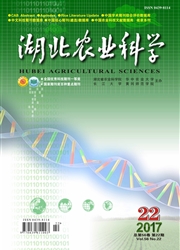

 中文摘要:
中文摘要:
以钾高效和钾低效基因型棉花(HEG和LEG)为试验材料,研究了最优水肥(W1K1),干旱胁迫(W2K1),低钾胁迫(W1K2),干旱、低钾胁迫(W2K2)对其光合作用及水分、钾素利用率的影响。结果表明:干旱显著降低花铃期2种基因型棉花叶片净光合速率(Pn)、气孔导度(Gs)、蒸腾速率(功,导致蕾铃脱落,钾素利用率(KUE)降低,造成棉花减产。施钾促进叶片Pn及水分利用率(WUE)的提高,但基因型间存在差异,LEG叶片WUE与施钾量成正比,HEG相反。低钾胁迫下HEG的Pn、L下降,但Pn下降幅度小于Tr,WUE增大。较高的WUE有利于提高棉花Pn,降低蕾铃脱落率,促进钾素的高效吸收和运输。
 英文摘要:
英文摘要:
To investigate the effects of soil water and potassium(K)on genotypic variation in photosynthesis, water and K use ef- ficiencies, pot experiments were carried out with two cotton genotypes (a high K utilization efficiency cotton genotype and a low K utilization efficiency cotton genotype referred as HEG and LEG, respectively) and four treatments: optimum water and K (W1K1), drought stress(W2K1), low K stress(W1K2), drought and low K stresses(W2IC2). The results indicated that soil drought had significantly negative effect on cotton net photosynthetic rate (Pn), stomatal conductance (Gs) and transpiration rate (Tr), then leading to falling of buds or bolls and decreasing the K use efficiency and yield. Application of K fertilizer improved cottons' Pn and water use efficiencies (WUE). There was a significant difference of WUE between genotypes. The WUE of LEG was notably and positively correlated with K applying, whereas HEG was on the contrary. Both Pn and Tr of HEG cotton de- creased under low soil K condition, while WUE increased because the change of Pn was smaller than Tr Higher WUE was con- ductive to higher absorption and transportation of K by increasing Pn and decreasing buds and boll falling ratio. Our findings will provide a new theoretical basis for further exploring of high K use efficiency mechanism.
 同期刊论文项目
同期刊论文项目
 同项目期刊论文
同项目期刊论文
 期刊信息
期刊信息
